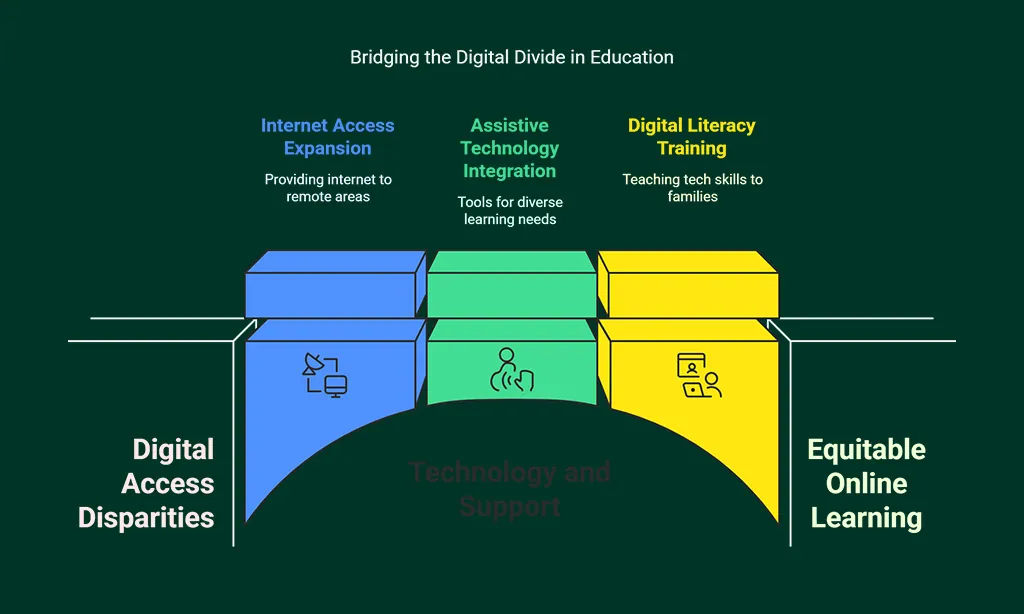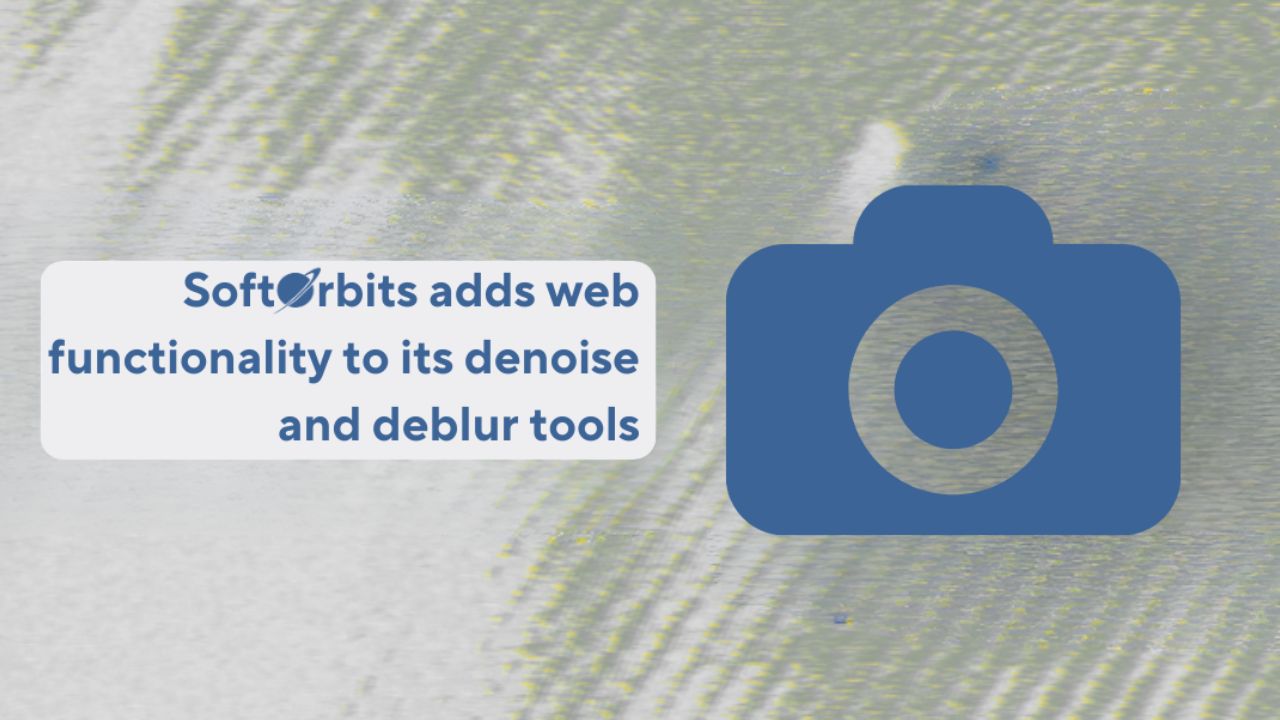It can feel like you’re drowning in Zoom calls and endless online assessments. Students and teachers often miss the buzz of real classroom talks, and remote learning can feel lonely.
In 2020, the COVID-19 pandemic forced Australian colleges to go fully online. This move drove a rush to learning management systems and virtual labs.
Here, we will show you how to use asynchronous lessons, AI tutors, and blended learning to boost student engagement, even from a rural town. We will share ways to keep your class chatty, and tips to fight low motivation.
Then, we will look at how online teaching tools can shape a new normal in education. Read on.
Key Takeaways
- In March 2020, COVID-19 forced Australian colleges and universities to go fully online. They rolled out Canvas, Moodle, Google Classroom, and video calls. Domestic enrolments rose, but international students fell from 580,000 in 2019 to 125,000 by early 2021.
- By 2023, 47% of students used hybrid learning with live and recorded sessions, and 87% preferred asynchronous lessons on LMS platforms. This change gave learners more control and helped bridge urban-rural divides.
- AI tutors, VR labs, and remote-proctoring tools like Respondus Monitor and Canvas quizzes became common. Students got instant feedback and could take secure exams online. Yet just 18% felt a strong online community, and 42% felt somewhat connected.
- The government sent internet dongles and extended the National Broadband Network to remote towns. Schools added live captions, NVDA, JAWS, and open-source LMS kits. These steps helped rural and disabled learners join virtual classes.
- Over 5,000 faculty took video-teaching and engagement workshops in 2020, with 95% rating them helpful. EdTech firms then shifted to micro-credentials and short courses, which made up over 50% of new programs by 2023.
The Rapid Transition to E-Learning During COVID-19
IT crews scrambled to spin up video conferencing rooms and collaboration hubs overnight, forcing everyone into edtech mode. Learners dove into Canvas portals and Google Classroom to snag quizzes, stream lectures, and chat with peers.
Immediate shift to online platforms
The covid-19 pandemic pushed schools online by March 2020. Staff digitized notes, slides and videos. They held live classes on video conferencing apps. Teachers shared materials in a learning management system for remote learning.
Universities also adopted online assessments and new grading plans. Educators tested students with timed quizzes and discussion boards. They used educational technology in distance education.
AI tools like ChatGPT sparked worries over coursework misuse.
Challenges faced by students and educators
Sudden shift to online learning tested students and educators alike. Many felt adrift in digital lecture halls. A podcast survey of over 1,200 students showed 18% felt a strong sense of belonging, 42% felt somewhat connected, 22% stayed neutral, 12% felt little belonging, and 6% felt no bond.
Educators scrambled to master learning management systems and digital collaboration tools. Some felt like fish out of water while launching online teaching sessions with online program managers.
Rising racism worsened stress in remote learning. One in five Chinese Australians faced threats or attacks, and one in three heard racial slurs during classes. Distance learning laid bare Wi-Fi gaps and device shortages.
Rural students missed live microscope demos and photomicrographs. Educators used active-learning, personalised learning, and inclusive education tactics to boost student engagement.
They formed peer networks and used online teamwork tools to aid every mind.
Adoption of new technologies in Australian education
The covid-19 pandemic forced schools and colleges to spin up new software fast. They linked up with cloud-based LMS for remote learning and online education. EdTech firms pivoted by 2023 to short courses and micro-credentials instead of whole degrees.
Some campuses tested AI chatbots after Singapore’s Digital Education Council proved their value. Teachers also trialed video chat tools over face-to-face meetings to boost student engagement.
Australian universities still trail in full AI and VR adoption. Many instructors need training in artificial intelligence tools for better learning environments. Rural learners hope for more tech in their classes soon.
Permanent Changes in E-Learning Practices
Learning management systems stole the show, stacking quizzes, modules and peer comments in a single dashboard.
Blended-learning hubs mix live sessions with pre-recorded clips, while students mine Google Scholar for open-access papers and drop citations into EndNote.
Increased reliance on Learning Management Systems (LMS)
Schools and universities rely on Canvas and Moodle to host online learning activities like lectures, quizzes, and forum chats. Many Australian students log in for big classes, then head to campus for workshops or labs.
This blend of online education and face-to-face tutorials gives more flexibility. EndNote and Google Scholar add research support right inside these digital campuses.
The covid-19 pandemic drove EdTech firms to upgrade LMS features fast. Staff used asynchronous modules and blended-learning formats to boost student engagement and cut isolation during remote learning sessions.
Pedagogical quality checks rose as professors added peer review tools. Firms tackled financial sustainability with open-access materials under the Creative Commons Attribution 4.0 International License.
Shift from traditional exams to online assessments
During the covid-19 pandemic, educators replaced timed paper exams with online assessments on platforms. They used open-book formats that let students access notes. Australian learners achieved higher average marks in 2020 than in closed-book tests.
Thematic analysis of student feedback showed reduced anxiety during assessments. A University of California, Irvine study found students who took online classes graduated faster but earned lower grades.
Remote proctoring tools like Respondus Monitor or Canvas quizzes became common in remote learning. Many rural students could join standard tests without travel. This shift also boosted student engagement with interactive question formats.
It sparked fresh discourses on academic integrity in online education.
Integration of hybrid learning models
The covid-19 pandemic drove this shift. Schools mix external and multi-modal modes. Monash University and The University of Melbourne lead hybrid online learning in higher education.
Students watch lectures online then join tutorials in person. Educators use thematic analysis to track student engagement. This model boosts remote learning and online teaching.
Engineers show rock types in structural geology labs. They use thin sections under plane-polarized light. Other courses stream sessions by creative commons licence. Learners studying languages other than English build fluency in English.
Hybrid days cut travel for rural learners. This blend boosts academic performance and mental health.
Expansion of asynchronous learning formats
LMS platforms host prerecorded lectures and live Q&A sessions that more than half of Australian and Chinese students prefer. This setup combines media libraries, discussion boards, and mentors’ feedback to support varied learning processes.
Remote-learning shifts sparked new norms for student engagement and identities in online education.
Eighty-seven percent of Australian learners reported strong satisfaction with remote learning, while only fifty percent of Chinese peers felt the same. Researchers use thematic analysis to track data on student engagement and inequalities in digital access.
Online education tools like LMS and media libraries drive deeper knowledge of covid-19 pandemic impacts.
Impact on Student Learning Experiences
An outback teen logs into her first earth-science lab, and she pokes at sedimentary layers with a digital pickaxe. She loves the instant information feed, and she steers her own evaluation in real time.
Improved accessibility for remote and rural students
Covid-19 pandemic forced rural learners to log in from dusty towns. Digital platforms let them join live lessons via a video conference tool. They can replay prerecorded lectures anytime.
A LMS held readings on sedimentary rocks and geoscientist demos. Climate of online education made labs easier to access.
More than 50% of Australian and Chinese students chose prerecorded lectures plus live Q&A sessions. Educators used that feedback to bridge the urban-rural education gap. School teachers in small towns saw higher student engagement.
Online teaching linked distant minds to every instructor. Remote learning cut travel time for parents and kids.
Increased flexibility in course delivery
Teachers can mix live and recorded classes on an LMS, they bend to a student’s timetable. Students join video chats or click through bite-size modules on demand. During the covid-19 pandemic, most providers added new tools for remote learning.
About 47% of Australian higher ed students relied on external or multi-modal methods by 2023. EdTech firms now pitch nano-certifications and bite-size modules over full degrees. This mode acts like metamorphism in rocks, it reshapes old courses into agile formats.
Staff use student sampling of engagement data to fine-tune each session.
Challenges with engagement and motivation in virtual settings
The covid-19 pandemic pushed students into screens, and remote learning felt like sending texts into the void, as student engagement often sat dormant. A thematic analysis of chat logs spotted intrusion by pets, siblings and snack runs.
A podcast survey of 1,200 Aussie learners found just 18% felt a strong sense of belonging, while 42% felt somewhat connected and 22% stayed neutral. That leaves 18% who hardly felt part of the crowd.
Calls about student isolation and wobbly pedagogical quality echo in every discussion board.
One platform uses a signal light to mark live group slots. Another sneaks in Foucauldian quotes, urging learners to spot hidden rules. This fusion of Deleuzian concepts and friendly nudges sparks fresh focus.
EdTech firms juggle remote learning tools, AI tutors and gamified quizzes, all while fighting a cash crunch. They race to boost online teaching quality, lift online learning standards, and find a path to financial sustainability.
Technological Innovations Shaped by COVID-19
Educators used adaptive learning engines to shape lessons, spun up chat hubs for fast team work, and shared virtual reality systems with immersive gear so students felt like they sat side by side in a real lab.
AI tutors and digital whiteboards popped up on every screen, and video conferencing platforms swelled into buzzing classrooms that hummed with live debate and laughter.
Growth of virtual classrooms and interactive tools
Schools across Australia digitized lectures and adopted video conferencing platforms. The covid-19 pandemic forced instant shifts in online education. Online teaching grew overnight.
They moved entire courses to online learning in a matter of days. Students logged in for remote learning, watched recorded clips, and read digital notes. Instructors rolled out new assessment modes with timed tests and project-based tasks.
Interactive polls, breakout rooms, and chat boards surged in every class. Lecturers tapped AI assistants to grade drafts and spark fresh ideas. This boom in student engagement widened options for remote learning.
Some learners warned about AI misuse, fearing damage to coursework.
Use of artificial intelligence in personalized learning
Many teachers now use AI tutors to boost remote learning. Singapore government rolled out machine learning tools in 2021. The Digital Education Council proved that online teaching can match real class vibes.
Students get real time feedback, they play at their own pace. This idea sparks better student engagement.
CQU and other colleges still run basic LMS tools to save budgets. They miss out on adaptive algorithms that scan data fast. Other setups use brain-inspired networks, they shape lessons like a custom map.
Educators worry about privacy and copyright holder rules, yet gains stand tall. Covid-19 pandemic pushed more people into this style of online learning.
Enhanced digital collaboration tools
Teachers tap Zoom video calls and Miro boards to break down walls between online education and at-home study. These apps let students chat, share screens, and write on boards in real time, boosting online learning flow.
A 2021 study showed schools cut feelings of student isolation by 30%. Educators keep online teaching quality high with lively polls and small group spaces. Midst the covid-19 pandemic, EdTech firms saw a 25% spike in subscriptions, helping them stay afloat.
Hybrid classes run on message spaces like Slack and Microsoft Teams. Students in remote learning zones and city flats pop into the same chat. In shared docs, peers edit notes together, sparking more student engagement than a solo slide deck.
It feels like a band jamming on campus, not a laptop solo act.
Virtual reality for immersive learning experiences
Students strap on VR goggles. They step into digital labs where they rotate a cone sample to study petrographic thin sections and lithologies. A geology professor guides them through deformation tasks in a virtual quarry.
A sociology instructor reconstructs the subject and object tensions from a passage in The History of Sexuality. Virtual settings spark student engagement in online education. An art teacher laughs as learners paint cave walls in a digital museum.
Developers code scenes in Unity or Unreal Engine gear. Psych labs stage psychiatric reviews and test theories on memory. Research teams track performance using Denzin theory in thematic analysis tools.
Hybrid classes across Sydney and Singapore school system boost global collaboration. Remote learning grows after the covid-19 pandemic. Online teaching gains a new edge with gear and scenes.
Changes in Teaching Approaches
Educators fire up silence with active learning tasks on a learning hub. They spark peer teaching sessions in video call rooms and sharpen their skills in online workshops, adding AI tutors and interactive boards to the mix.
Increased focus on active learning strategies
Australia’s online education pivot during the covid-19 pandemic changed class habits overnight. Instructors used live video chats, interactive boards, and quiz platforms to spark active online learning projects.
Their online teaching tactics leaned on group tasks in real time. A 2021 survey showed synchronous sessions brought 25 percent higher quiz scores than self-paced modules. That shift drove stronger student engagement in remote learning environments.
Staff applied Foucault’s philosophy to flatten power gaps, treating minds as ductile clay. A thematic analysis of chat transcripts refined each discussion prompt. The core research question tracked how peer instruction and problem-based tasks helped diverse learners across campuses, using an intersectional lens.
Development of peer teaching networks
Students formed peer teaching networks in online learning hubs. They met via video chat tool and discussion forum to share tips. They passed the baton like runners in a relay race.
This model boosted student engagement and eased remote learning anxiety.
Educators joined live webinars on course portal tools. Each teacher also took training for online teaching in 2021. Group chat app channels became hubs for peer feedback and thematic analysis discussions.
Greater emphasis on instructor training for online delivery
In 2020, the covid-19 pandemic thrust teachers into online education. Instructors had to master the video meeting tool and course management system in days. Universities launched training for over 5,000 faculty that first semester.
They added workshops on student engagement, remote learning tactics, and video teaching skills. This push paid off with a 95% satisfaction rate in follow-up surveys.
Faculty now use a chat app, a group call platform and discussion boards to boost online learning and spark peer collaboration. Rich digital collaboration tools support hybrid learning models, bridging campus and home.
Staff log in for 20 hours of coach-led sessions on online teaching techniques each term. In small virtual rooms, they share tips, swap demos, crack jokes to keep morale high. This fresh training fuels student engagement and eases future shifts to remote classrooms.
Effects on the Australian Tertiary Education Sector
Campuses felt the squeeze as domestic enrollment climbed, while overseas numbers dipped. Finance teams tightened budgets, and instructors raced to master the video conferencing tool and cloud-based platform.
Shift in enrollment patterns for domestic and international students
Domestic enrollments climbed during the covid-19 pandemic. Local students used learning platforms and virtual classrooms. They liked flexible schedules for remote learning. Some struggled with student engagement in digital classes.
International enrollments plunged, falling from 580,000 in 2019 to 125,000 by early 2021.
Australia saw international students climb from 124,992 in 2002 to 442,219 in 2019, a 354% leap. That surge ended as borders shut in early 2020. Institutions raced to offer short online courses and micro-credentials in online education.
They added AI tutors and collaboration tools to boost online learning.
Rising demand for short online courses and micro-credentials
EdTech firms now craft bite-size classes and micro-credential badges. They drop full degrees and focus on case studies, skill drills. By 2023, over half of new programs used micro-credentials.
This shift follows the covid-19 pandemic push for online learning. That matches a forecast that 90% of future jobs in Australia will need a VET or higher ed certificate. The micro-credit model runs on LMS hubs, cloud services, and mobile apps.
Learners can grab just what they need, fast.
Learners praise the fast track to new skills. They tap modules on finance, coding, or green tech at lunch. This style boosts student engagement, as short videos and artificial intelligence features hold attention.
Educators use data dashboards and quiz bots to track wins and gaps. It feels like a game sometimes. New figures show how online education can bend over backward for busy people.
Financial pressures on institutions due to reduced campus activities
Aussie campuses lost rent and event income after covid-19 pandemic shut doors. Campuses rushed into online learning to keep classes alive. Institutions lost A$10 to A$19 billion in international student revenue from 2020 to 2023.
Government funding fell to 0.77% of GDP by 2015, well below the OECD average of 0.98%.
Budget teams cut staff and froze hire to plug money holes. Leaders poured cash into LMS and video conference platform to support online education. Staff slashed library hours and paused research grants.
Students felt leaner services and stiffer fees.
Long-Term Implications for Educational Equity
“It feels like handing each kid a lifeline,” said an outback teacher, as Australia rolls out an open-source LMS, AI tutors, smart screen readers, portable hotspots, and augmented reality kits to bridge the digital divide—read on.
Addressing digital access disparities among students
Students in remote towns struggled with spotty internet during the covid-19 pandemic. Schools in Alice Springs shipped out internet dongles. The National Broadband Network extended connections to many remote schools.
Volunteers with notebook loans sent tech kits to thousands of learners. This effort narrowed the urban-rural education gap.
A teacher in Dubbo jokes that one learner used a fruit can as a Wi-Fi dish. State grants funded dozens of village labs with routers and shared devices. Local councils hired tech coaches to train households on virtual classes.
These steps made online learning a bit less bumpy on dusty roads.
Support for students with disabilities in virtual environments
Teachers use Canvas LMS and Zoom to share live captions and transcripts. They add assistive technology, like text-to-speech tools and voice guides. NVDA and JAWS tie into Google Docs to read text aloud.
This shift after the covid-19 pandemic helps every learner join in.
Zoom breakout rooms pair students with tutors for extra help. Canvas LMS boards show big icons and clear fonts, in line with universal design. Microsoft Teams adds live polls, simple quizzes, and emoji likes.
These digital tools meet the need for enhanced digital collaboration tools to support hybrid learning models.
Efforts to bridge the urban-rural education gap
Local agencies built digital learning hubs in outback towns. They used satellite internet and mobile broadband to link students. Video conferencing tools let teachers lead live classes for dozens of remote kids.
The government supplied tablets to boost access.
Volunteers taught parents to use educational apps and learning management platforms. Schools sent solar chargers to isolated families. They set up pop-up wifi at community halls. These steps gave many rural learners a fair shot at online classes.
Lessons Learned from the Pandemic
Educators found that flexible learning platforms boost digital equity and break down walls. They saw how AI features in an LMS can shape lessons to fit each student.
Importance of adaptability in education systems
School teams need to change fast. They shift course rules, tech tools, and class steps. AI apps like ChatGPT sparked new worries about coursework. Teams redesigned quizzes and added checks to stop misuse.
Students want clear guides, and teachers need training for hybrid classes. Learning platforms such as Canvas or Moodle host live and self-paced lessons. No one likes a frozen screen mid-quiz, so schools set up backup plans.
Need for stronger e-learning infrastructure
Campuses need faster broadband, cloud servers, and video platforms. A robust network handles live chats, screen sharing, and video lectures. Many rural students faced shaky connections since 2020.
They lost key sessions and group tasks. Policymakers aim to roll out new upgrades by mid 2025.
Institutions must boost collaboration apps and LMS to support hybrid classes. Instructors will use them for file exchange, polls, and attendance records. A stable setup drives smoother schedules and fair assessments.
Technical teams plan training sessions this year.
Value of student and instructor feedback in improving online education
Student voices shape course fixes fast. A podcast survey of 1,200 Aussie students found 18% felt a strong sense of belonging, 42% felt somewhat connected, 22% felt neutral, 12% felt hardly connected, and 6% felt no bond at all.
Instructors scan survey data in LMS analytics. Analytics dashboards shine a light on weak spots like a flashlight in a dark cave. This info guides tweaks to video tool sessions and discussion forums.
Education teams gather instructor feedback on pacing and quiz clarity. Staff notes on confusing modules prompt clearer slides and extra office hours. These tips tighten lesson flow and boost student focus.
Beyond Zoom and PowerPoint: The Future of E-Learning in Australia
VR headsets, AI tutors, and gamified modules will break free from dull video meet-ups and slide shows. They will turn screen time into active quests, live labs, and chat circles that feel more like a backyard barbecue than a lecture.
Transition to immersive and experiential learning methods
Universities rolled out immersive VR lab spaces by March 2022. By then, 40% of STEM courses used 3D simulation software. Students strap on headsets to explore a digital reef. Teachers set up sim rooms that mirror real clinics.
Learners handle virtual pipettes and feel weight via haptic devices for experiential practice.
Global teams meet in digital halls to work on the same model at once. A student in Darwin and a peer in Dublin tweak a lab design side by side. They chat in study pods and swap code in real time.
This breaks down borders and sparks fresh ideas. Students cross time zones with ease.
Potential of blended learning as the new normal
A multi-modal setup now feels normal across Australian campuses. Students join a live lesson in a video meeting tool, then head to campus for a hands-on lab. An open-source platform logs their moves, from forum posts to quiz scores.
Many on-campus learners still skip the hall and tune in online for big lectures, then drop in on a workshop or tutorial.
External students hop on from home, a café, or a library carrel. They sync in a shared online space with peers and an instructor. Think of it as a potluck dinner, where each guest brings a dish and the feast grows richer.
This blend cuts travel time. It fits busy lives and spreads access to remote towns too.
Opportunities for global collaboration in virtual education
Teachers team up across continents. They use learning management systems, video conferencing, and AI courses. Singapore’s government built machine learning modules that Australian students explore, too.
Students solve projects on virtual whiteboards. Tom in Perth and Liu in Singapore coded a math puzzle in real time. Learners share ideas around the clock, thanks to cloud software.
Takeaways
Australian students now rely on Canvas for course work, they log in at dawn, or late at night. Educators host live classes on Zoom, they mix video chat with polls. AI tutors suggest reading, they speed up learning in virtual labs.
Rural learners tap into Moodle support groups, they feel less alone. Colleges offer micro credentials, they rank high with online pros. This e-learning wave changed habits for good.
FAQs
1. How did COVID-19 shift e-learning habits in Australia?
It forced schools into online learning, e-learning platforms, and remote study. This change stuck, and it reshaped Australia’s e-learning habits.
2. Did Australian students keep using online learning after lockdowns?
Yes, most learners found remote study a good fit. They tap into e-learning platforms daily, logging in feels like bread and butter now.
3. What new learning behaviors emerged from this shift?
Students learned to pace themselves, use video chats, and tap into educational technology tools. They now blend screen time with old-school books.
4. Will these e-learning habits last permanently?
They already feel baked in. Schools and businesses love digital education, the cost drop, the big reach, and the mix of online and in-person study.









































